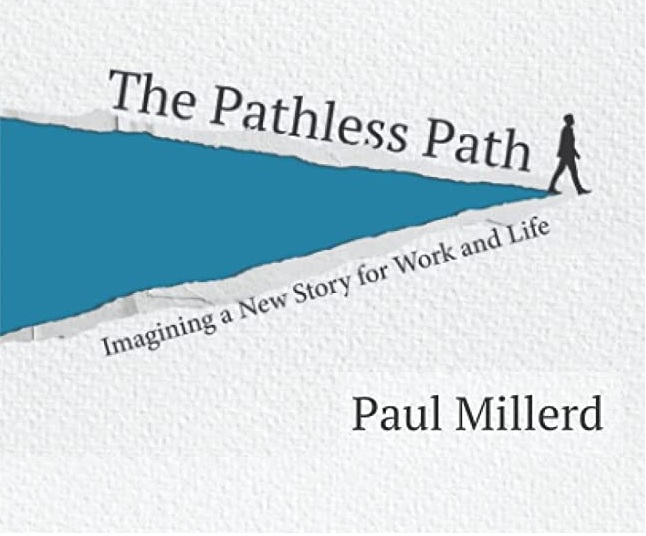As humans, we often find ourselves going through life on autopilot, following the same routines and patterns day in and day out. We wake up, go to work or school, come home, watch TV or scroll through social media, and go to bed, only to repeat the same cycle the next day. This can lead us to feel stuck, unfulfilled, and disconnected from our true selves. But there is another way to live, a way that takes us off the beaten path and allows us to explore life beyond the default.
In this article, we’ll explore six lessons from the pathless path, a way of life that encourages us to step outside our comfort zones and embrace the unknown. These lessons can help us break free from the mundane and discover a more meaningful and fulfilling existence.
Lesson 1: Embrace Uncertainty
One of the key principles of the pathless path is embracing uncertainty. Rather than trying to control every aspect of our lives, we learn to accept that there are many things that are beyond our control. This can be a scary prospect for many of us, as we crave stability and predictability. But the truth is, life is inherently uncertain, and trying to resist this fact only leads to more suffering.
Instead, we can learn to embrace the unknown and trust in the journey. As the philosopher Lao Tzu once said, “A good traveler has no fixed plans and is not intent on arriving.” When we let go of our attachment to outcomes and learn to enjoy the journey, we open ourselves up to new possibilities and experiences.
Lesson 2: Live in the Present Moment
Another key lesson from the pathless path is the importance of living in the present moment. Too often, we get caught up in regrets about the past or worries about the future, and we miss out on the beauty of the present moment. But the present moment is all we ever truly have, and learning to be fully present in it can help us cultivate a deeper sense of peace and fulfillment.
Mindfulness practices, such as meditation and yoga, can be helpful in learning to live in the present moment. By focusing on our breath and our physical sensations, we can quiet the constant chatter of our minds and become more attuned to the present moment. As the Buddhist monk Thich Nhat Hanh said, “The present moment is the only moment available to us, and it is the door to all moments.”
Lesson 3: Follow Your Intuition
The pathless path also encourages us to follow our intuition, rather than relying solely on our logical minds. While our rational minds can be helpful in making decisions, they are not always in tune with our deeper desires and needs. Our intuition, on the other hand, is a powerful tool that can help guide us towards the things that truly matter to us.
Learning to listen to our intuition can be challenging, especially if we are used to relying solely on logic. But by paying attention to our gut feelings and inner nudges, we can learn to trust ourselves and make decisions that are in alignment with our true selves.
Lesson 4: Embrace Change
Change is a natural part of life, but it can be difficult to navigate. The pathless path teaches us to embrace change and see it as an opportunity for growth and transformation. Rather than clinging to the familiar and the comfortable, we learn to embrace the unknown and be open to new experiences.
Of course, change can be scary and uncomfortable at times, and it’s okay to feel a sense of resistance. But when we learn to let go of our attachment to the way things have always been, we open ourselves up to new possibilities and opportunities.
Lesson 5: Connect with Nature
Connecting with nature is a powerful way to tap into our inner wisdom and find peace and solace. Spending time in nature has been shown to reduce stress, boost our immune systems, and increase our overall sense of well-being. When we step away from the hustle and bustle of daily life and immerse ourselves in the natural world, we tap into something deep within ourselves.
Nature also provides us with a powerful reminder of the interconnectedness of all things. We are not separate from the natural world, but rather a part of it. When we take the time to connect with nature, we can learn to see ourselves as part of a larger whole and gain a deeper appreciation for the beauty and complexity of the world around us.
Lesson 6: Cultivate Gratitude
Finally, the pathless path teaches us the importance of cultivating gratitude in our lives. It’s easy to focus on what we don’t have or what’s not going well in our lives, but when we shift our attention to the things we are grateful for, we open ourselves up to a deeper sense of joy and contentment.
Practicing gratitude can be as simple as taking a few minutes each day to reflect on the things we are thankful for. This might include our health, our relationships, our home, or simply the fact that we are alive. By focusing on the things we are grateful for, we train our minds to see the good in our lives and cultivate a more positive outlook.
Conclusion
Living the pathless path is not about abandoning all structure and routine in our lives. Rather, it’s about finding a balance between the familiar and the unknown, the comfortable and the challenging. By embracing uncertainty, living in the present moment, following our intuition, embracing change, connecting with nature, and cultivating gratitude, we can find a more meaningful and fulfilling way of life.
If you’re interested in exploring the pathless path further, there are many resources available to help you along the way. One book that I would highly recommend is “The Untethered Soul” by Michael A. Singer. In this book, Singer explores the concept of inner freedom and provides practical tools for cultivating a deeper sense of peace and fulfillment in our lives.
Another great resource is the work of Eckhart Tolle, particularly his book “The Power of Now”. Tolle’s teachings on mindfulness and living in the present moment have helped countless people find a greater sense of peace and fulfillment in their lives.
Ultimately, living the pathless path is about stepping outside our comfort zones and embracing the unknown. It’s about letting go of our attachment to outcomes and learning to enjoy the journey. By doing so, we can discover a more meaningful and fulfilling existence, one that is rich with possibility and wonder.











